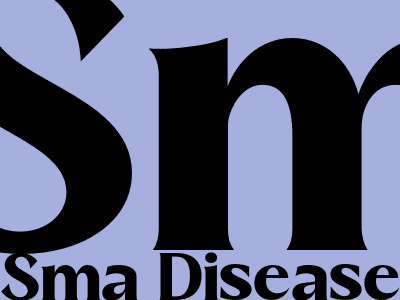SMA Disease: A Comprehensive Guide for Patients and Caregivers
What is SMA Disease?
SMA, or spinal muscular atrophy, is a genetic neuromuscular disease that affects muscle movement.
It is caused by a mutation in the SMN1 gene, which is responsible for producing the protein SMN, essential for the survival of motor neurons.
Without enough SMN, motor neurons degenerate, leading to muscle weakness and atrophy.
Types of SMA Disease
SMA is classified into several types based on the age of onset and severity of symptoms:
- Type 0: Onset before birth, most severe form, typically fatal within the first few months
- Type 1: Onset before 6 months, severe muscle weakness, difficulty breathing, and swallowing
- Type 2: Onset between 6 and 18 months, less severe than Type 1, but still significant muscle weakness
- Type 3: Onset after 18 months, mild to moderate muscle weakness, may be able to walk
- Type 4: Onset in adulthood, mildest form, muscle weakness and fatigue
Symptoms of SMA Disease
Symptoms of SMA vary depending on the type, but common signs and symptoms include:
- Muscle weakness and atrophy
- Difficulty breathing and swallowing
- Delayed motor skills, such as sitting, crawling, and walking
- Scoliosis or other spinal deformities
- Joint contractures
- Respiratory problems
- Fatigue
Diagnosis and Treatment of SMA Disease
SMA is diagnosed through genetic testing, which can identify mutations in the SMN1 gene.
Treatment aims to slow disease progression and improve quality of life, including:
- Nusinersen (Spinraza): An injectable medication that increases SMN protein levels
- Risdiplam (Evrysdi): An oral medication with similar effects to Nusinersen
- Onasemnogene abeparvovec-xioi (Zolgensma): A one-time gene therapy that delivers a functional copy of the SMN1 gene
- Physical therapy
- Occupational therapy
- Assistive devices, such as wheelchairs and braces
Prognosis and Outlook for SMA Disease
The prognosis for SMA has improved significantly with the development of new treatments.
Early diagnosis and intervention can help to slow disease progression and improve outcomes.
While there is currently no cure for SMA, research continues to focus on developing new and more effective treatments.
Support for Patients and Families
Living with SMA can be challenging, but there are resources available to support patients and families:
- SMA Foundation: Provides information, support, and resources
- Cure SMA: Funds research and advocates for patients
- Families of SMA: Offers a community of support and information
Conclusion
SMA Disease is a complex neuromuscular condition that requires timely diagnosis and comprehensive care.
With the availability of innovative treatments and ongoing research, the prognosis for individuals with SMA continues to improve, offering hope for a more fulfilling life.

تعليقات